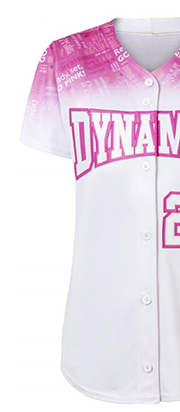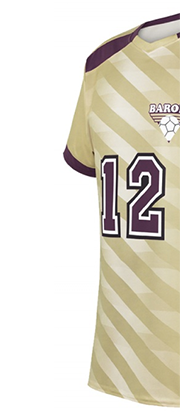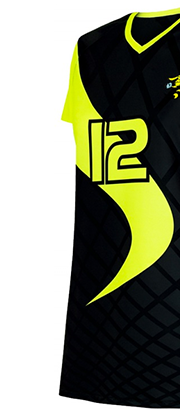Whether you’re a casual baseball fan or a die-hard player, you’ve probably heard the terms “pitching” and “throwing” used interchangeably. However, there is actually a big difference between the two! Pitching is an important part of the game of baseball, and understanding the distinction can help you improve your own performance on the field. So, what exactly is the difference between pitching and throwing in baseball?
Pitching refers to the act of throwing the ball with an underhanded motion. This type of throw is used to generate more speed and movement on the ball, making it harder for batters to hit. Throwing, on the other hand, is simply the act of throwing the ball with an overhand motion. This is the most common type of throw, and is used for all other purposes on the field (such as when outfielders are throwing the ball in to the infield).
Key Takeaways:
-Pitching is an important part of the game of baseball, and understanding the distinction can help you improve your own performance on the field.
-Pitching refers to the act of throwing the ball with an underhanded motion. This type of throw is used to generate more speed and movement on the ball, making it harder for batters to hit.
-Throwing, on the other hand, is simply the act of throwing the ball with an overhand motion. This is the most common type of throw, and is used for all other purposes on the field (such as when outfielders are throwing the ball in to the infield).
Now that you know the difference between pitching and throwing, you can start to focus on perfecting your own technique. Practice makes perfect, so get out there and start working on your game! Who knows, with a little practice you could be the next big thing in baseball.

What are the different types of pitches?
Baseball is a game of inches, and nowhere is that more true than on the pitcher’s mound. A well-placed pitch can mean the difference between a strikeout and a bases-clearing home run, so it’s important for pitchers to know all their options. There are four types of pitches in baseball: the fastball, the curveball, the slider, and the changeup.
The fastball is the easiest pitch to throw, and it’s also the most common. Fastballs are thrown hard and straight, with little movement. They’re used to catch hitters off guard, and they’re often used as ‘blow-by’ pitches – meaning that they’re used to get ahead in the count by forcing the hitter to swing at a bad pitch.
The curveball is Baseball’s classic trick pitch. It starts out looking like a fastball, but then it suddenly drops down into the strike zone. Curveballs are tough to hit, but they’re also hard to control – so they’re often used as ‘strikeout pitches’, or pitches that are used to put an end to an at-bat.
The slider is similar to the curveball, but it doesn’t drop down as sharply. Sliders tend to break later than curveballs, which makes them harder to hit but also harder to control. Sliders are often used as ‘putaway pitches’ – meaning that they’re thrown when pitchers are ahead in the count and looking for a strikeout.
The changeup is another deception pitch, and it’s typically used to throw off hitters who are expecting a fastball. Changeups are slower than fastballs, and they often have movement that makes them difficult to hit. Changeups are sometimes called ‘off-speed pitches’, because they’re thrown with less velocity than a fastball.
Pitching is an intricate science, and there’s a lot more to it than just throwing the ball. But knowing the different types of pitches is a good place to start for any aspiring baseball player.
How do pitchers control the ball?
Pitchers in baseball have a wide array of pitches they can throw, and each pitch is thrown with a specific goal in mind. Fastballs are the simplest pitch to control – the pitcher simply throws the ball as hard as possible in a straight line towards the strike zone. Breaking balls, on the other hand, are designed to fool hitters by deviating from this path. A pitcher may throw a curveball, for example, by gripping the ball tightly and spinning it so that it curves in mid-air. Similarly, a slider is thrown with a sideways motion that causes it to break late in its flight. By mixing up their pitches and keeping hitters guessing, pitchers can be very effective at controlling the game.
What are the benefits of pitching?
Baseball is a game of opportunities. When a pitcher has the opportunity to pitch, they need to take advantage of it. Pitching is one of the most important aspects of baseball, and it can be a deciding factor in whether or not a team wins or loses. There are many benefits to pitching, both for thepitcher and for the team. First, pitching gives the pitcher a chance to showcase their skills and abilities. This can be helpful in attracting attention from scouts or college recruiters.
Second, pitching helps to build confidence and discipline. It requires focus and control, and pitchers who can master these skills will be better equipped to handle pressure situations. Third, pitching provides a opportunity for players to work on their craft and improve their techniques. By practicing regularly and paying close attention to detail, pitchers can develop their skills and become more accurate and effective. Finally, pitching is simply fun. It’s a chance to competed against others and test oneself. For all these reasons, pitching is an essential part of baseball (baseball uniforms) and provides numerous benefits for those who participate.
Conclusion: How can pitchers improve their game?
In baseball, the pitcher is one of the most important players on the field. A pitcher’s job is to throw the ball to the catcher, who then tries to get the batter out. Pitchers need to have a strong arm and good control of their pitches in order to be successful. There are a few things that pitchers can do to improve their game.
First, they should practice throwing the ball as often as possible. This will help them develop their arm strength and accuracy. Second, they should try to mix up their pitches. This means throwing different types of pitches, such as fastballs, curveballs, and sliders. This will keep hitters from getting too comfortable at the plate. Finally, pitchers should always be aware of the situation on the field. They need to know how many outs there are, where the runners are, and what the score is. This information will help them make better decisions on when and how to pitch. By following these tips, pitchers can improve their game and help their team win more games.






